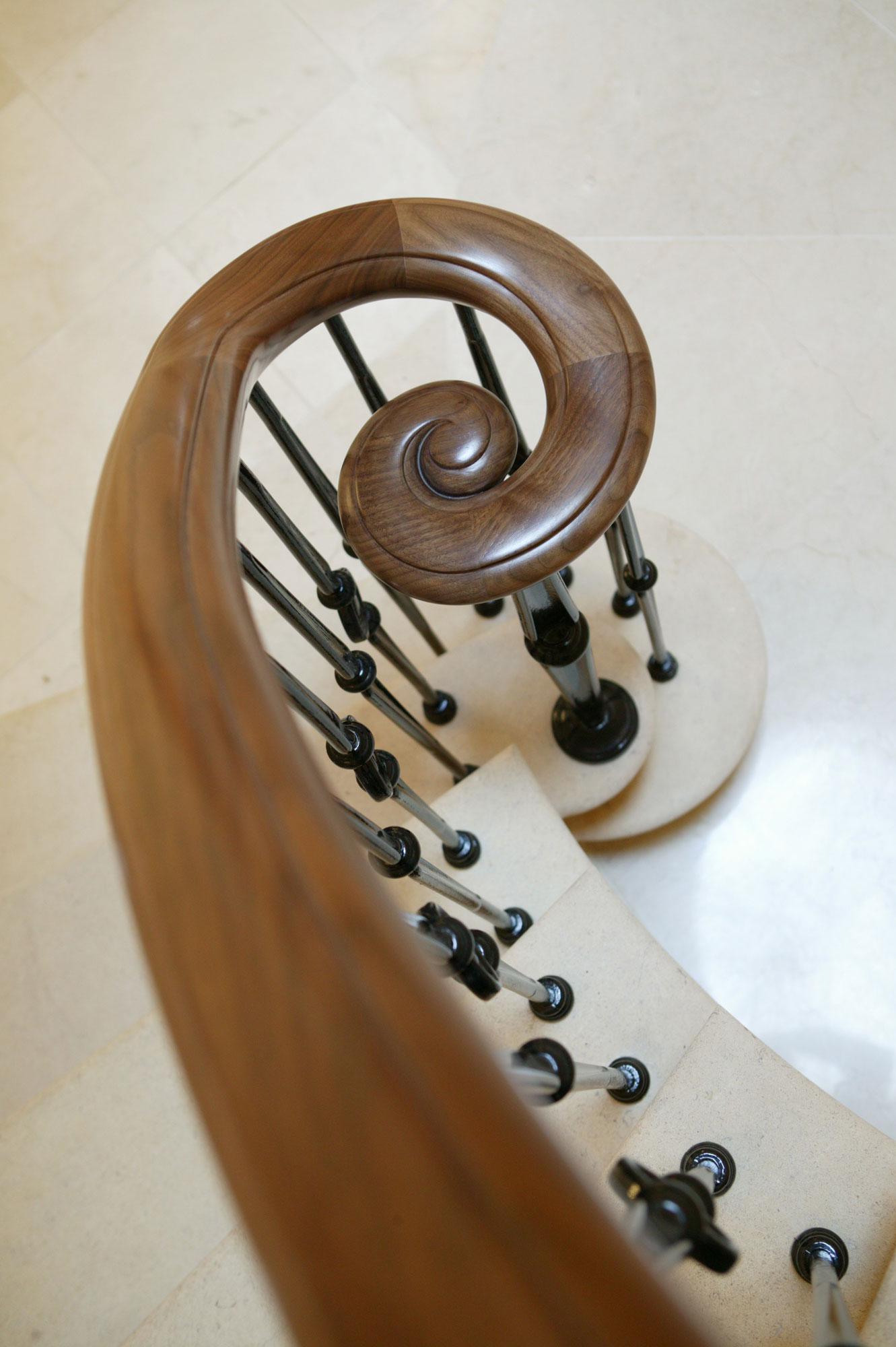One of the most commented upon areas of any handrail is the way in which it finishes at the bottom of the stair.
These are generally referred to as Curved Handrail Ends or Ornamental Handrail Ends.
Designers are now trying to avoid using newel posts as they can disrupt the overall flow of the handrail and the staircase.
But what are the options?
Of course, you can simply finish with a cut end or a profiled handrail end which creates a rather abrupt end to what could potentially be a very elegant stair.
A cut end can also be potentially dangerous for visually impaired people, which lead to the DDA regulations specifying that the cut end should be avoided and, at the very least, be returned to the wall.
The next option is to use an end cap whether it’s a simple rounded end cap or a more ornate square or profiled cap to create more of a feature.
A ram’s horn, where the handrail appears to scroll under the handrail, provides a subtle but stylish finish and helps to continue the flow of the handrail. The ram’s horn is the perfect option where space is tight and a volute cannot be achieved.
The pièce de résistance of staircase design is a volute that provides a sweeping handrail end and can transform even a standard staircase into a stunning feature staircase.
The size and shape of the volute will depend on the pitch of the stair and the availability of the space at the foot of the stair.
The traditional finish is, of course, the wreathed volute where the handrail turns into the volute.
To discuss your next project contact us now
Handrail Ends | Ornamental Handrail Ends | Curved Handrail Ends
